|
View as a webpage
|

Indian Pass Wilderness, El Centro Field Office
|
|
ISSUE 897- April 9, 2020
|
|
|
- Headlines & Highlights
- Wildland Fire & Fuels Management
- BLM Armchair Adventures
- BLM & DOI Highlights
- Wildlife Question of the Week
- Upcoming Events

BLM releases draft plan to further efforts to conserve and restore sagebrush communities in the Great Basin
BLM releases draft plan to further efforts to conserve and restore sagebrush communities in the Great Basin (BLM news release)
|
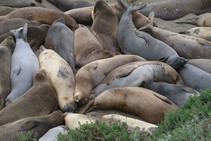
Goodbye, weaners: Elephant seal pups are leaving SLO County beaches but others are back
Elephant seals are on the beach at Piedras Blancas north of San Simeon, but docents will not be there to help the public understand them. Friends of the Elephant Seal canceled all docent shifts and closed its office until further notice, to avoid spreading coronavirus. Taking a walk is part of sheltering in place. The boardwalk is always open, so come out and enjoy the fresh air and sunshine. (The Tribune video)
|

Explore the Science of California's Vernal Pools
Vernal pools are unique biological sanctuaries filled with diverse communities of vegetation, wildlife and microorganisms. While only a small proportion of California’s landscape, vernal pools play an imperative role in the conservation of natural landscapes. Visit https://bit.ly/2UMZIjB to explore the ecology, cultural history and management of vernal pools at the Sacramento River Bend in the Redding Field Office. (BLM CA Facebook)
|

BLM Lands, Trails Open but Campgrounds Closed
The Bureau of Land Management has temporarily closed all developed campgrounds and developed recreation sites in California, to help limit the spread of COVID-19. The closure is in accordance with guidance from the Centers for Disease Control and Prevention and with the Governor’s shelter in place order. The closure will remain in effect until conditions allow for safe use of the recreation areas. (SCV News)
Related: For closure updates visit: (BLM CA website)
|
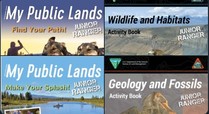
Junior Ranger booklets available online
Home with your kids during #Covid19? Interested in remote learning ideas? BLM’s Junior Ranger books help your kids connect with the natural world and cultural resources: https://on.doi.gov/3ahHT1m. Many of the booklets are available in English and Spanish! #SlowTheSpread. (BLM Twitter)
|
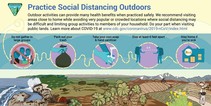
Practice social distancing outdoors
Outdoor activities can provide many health benefits when practiced safely. We recommend visiting areas close to home while avoiding very popular or crowded locations where social distancing may be difficult and limiting group activities to members of your household. Do your part when visiting public lands. (BLM CA Website)
|

BLM Palm Springs-South Coast Prepares for Fire Season
BLM fire crews remain hard at work to prepare for this year's fire season. Today, a crew from the BLM Palm Springs-South Coast Field Office conducted prescribed burns at the Dos Palmas Preserve near the North Shore of the Salton Sea. (BLM CA Facebook)
|
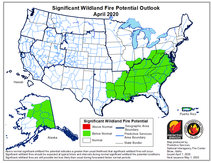
Wildland fire outlook
Check out the latest #WildlandFireOutlook! Available here. (NIFC Facebook)
|

Be ready for wildfire
Wildfires don’t wait and hot weather will be here before we know it. Now may be the perfect opportunity to focus on #HomeHardening to protect your home against future wildfires. One quick project that can help prevent embers from entering your home is to install weather stripping to your garage door. (CAL Fire Facebook)
|
|

Black Rock Playa
Looking down on the Black Rock Playa from the Calico Mountains, it’s hard to imagine how emigrants on their way to California in the 1850s felt upon reaching the driest most desolate part of the trail. Black Rock Point, visible in the center of the photo, was a major point of reference for the emigrants. Their journals include descriptions of discarded gear and dead oxen along the way and boiling hot springs, but no drinking water. (BLM Instagram)
|
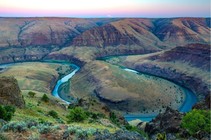
John Day River
Northeastern Oregon’s John Day River, a tributary of the Columbia River, is approximately 284 miles (457 km). Undammed along its entire length, the river is the third longest free-flowing river in the contiguous United States. There is extensive use of its waters for irrigation. Its course furnishes habitat for diverse species, including wild steelhead and Chinook salmon runs. However, the steelhead populations are under federal Endangered Species Act protections, and the Chinook salmon have been proposed for such protection. (BLM Instagram)
|
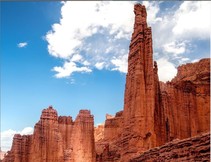
Fisher Towers
Rising more than 800 feet from its base, “The Titan” is the largest freestanding rock tower in the United States. The Titan is part of Fisher Towers located just south of the Colorado River in far eastern Utah. The towers have eroded from rock fins made up of layers of sedimentary rock in shades of red-brown, red-purple, and maroon. The colors are a result of varying amounts of hematite (an iron oxide). (BLM Instagram)
|

Jim McClure-Jerry Peak Wilderness area
A late-season snow blankets the lower flanks of 10,015 ft Jerry Peak as viewed from the east along Sage Creek. Here in the mid-high elevations in the Rockies, even June is a competition between seasons as trees and wildflowers leaf out while snow is still a possibility. The Jim McClure-Jerry Peak Wilderness area, managed by the Bureau of Land Management in Idaho, also includes the upper Herd Creek watershed with one of the most intact native plant communities in the state. (BLM Instagram)
|
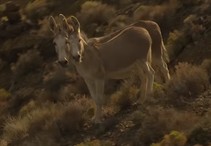
Staying inside but dreaming of wild horses and burros on public lands?
Wild burros can be found roaming public lands in Arizona, California, Nevada, Oregon and Utah. Take an #ArmchairAdventure to see some wild burros with our new video below! Learn more about wild burros, wild horses, and the habitat they share with hundreds of other species on BLM-managed public lands: https://go.usa.gov/xvgbj (BLM CA Facebook)
|

At prisons across the West, inmates are helping to restore the imperiled sagebrush ecosystem
State prisons across the West, along with the U.S. Bureau of Land Management and the nonprofit Institute for Applied Ecology, are working to combat sagebrush habitat loss. (BLM Youtube)
|

Interior Improves Strategies to Combat Wildfires across 223 Million Acres in the Great Basin
BLM to strategically implement 11,000 miles of fuel breaks across a 223-million acre area in California, Idaho, Nevada, Oregon, Utah and Washington. (DOI news release)
|
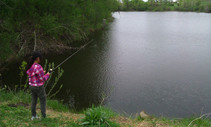
Secretary Bernhardt Proposes Historic Expansion of Hunting and Fishing Opportunities
U.S. Secretary of the Interior David L. Bernhardt announced today a historic proposal for new and expanded hunting and fishing opportunities across more than 2.3 million acres at 97 national wildlife refuges and 9 national fish hatcheries. (DOI news release)
|

BLM seeks public comment on proposed e-bike regulations
The Bureau of Land Management today announced a 60-day public comment period on proposed electric bike, or e-bike, regulations, intended to make it easier for more Americans to recreate on and experience their public lands. (BLM news release)
|
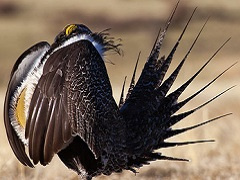
BLM extends comment period on greater sage-grouse analysis
he Bureau of Land Management has extended the public comment period on six draft supplemental environmental impact statements for the resource management plans that guide management of greater sage-grouse habitat on public lands in seven Western states. (BLM news release)
|

This Week at Interior April 3, 2020
An "all of America approach" to fight the coronavirus, and provide relief to American families, businesses and health care workers serving on the frontlines; Interior continues to provide critical services to the American people from fighting wildfires to delivering public health services, as our parks, refuges, and outdoor recreation areas modify their operations to keep the public safe. (DOI video)
|

AIA Supports Increased Funding for the BLM Cultural Resources & National Conservation Lands Accounts
In March, the AIA joined with 87 other organizations in signing on to a letter to congressional appropriators in support of increased Fiscal Year 2021 funding for the Bureau of Land Management’s (BLM) Cultural Resources Management and National Conservation Lands accounts. (AIA)
|
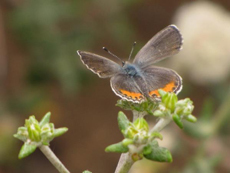
El Segundo blue
What plant does the life cycle of the El Seguno blue butterfly'(Euphilotes battoides allyni) depends on?
a) Milkweed
b) Coast buckwheat
c) Sagebrush
Keep scrolling to find the answer.
|

BLM seeks comments on 2020 off-highway vehicle recreation proposals
The Bureau of Land Management is seeking public comments on the California State Parks, Off-Highway Motor Vehicle Recreation Division, off-highway vehicle recreation proposals, which are available for review from March 3 to May 4 (BLM news release)
|
|
Wildlife Question of the Week Answer
The answer is b) coast buckwheat. The life cycle of the El Segundo blue butterfly is closely tied to coast buckwheat. Survival of each of its four life stages (egg, larva, pupa, and adult) depend on this plant. Adults normally fly from mid-June until early September but may emerge earlier. Adult butterflies typically live from four days to two weeks and feed on coast buckwheat pollen and nectar. Female butterflies mate and lay eggs on coast buckwheat flowers. Eggs hatch within three to five days, and larvae (caterpillars) undergo four instars (time between molts). Larvae then pupate in leaf litter, sand, or at the base of a leaf forming a pupa (chrysalis). This butterfly hibernates through winter as a pupa.
The range of the El Segundo blue butterfly historically extended over much of the 3,200 acre El Segundo Dunes of Los Angeles County, CA. The butterfly occupied areas within the dunes with high sand content and where its host plant (food plants for larvae), coast buckwheat (Eriogonum parvifolium), was found. The historic population size likely averaged 750,000 butterflies per year. The El Segundo blue is endemic to coastal sand dunes and is now found in this habitat in Los Angeles County extending from the Palos Verdes Peninsula north to the Ballona Wetlands. Since its listing as endangered, the El Segundo blue has also been found in Santa Barbara County, California.
Source: FWS pollinators webpage
|
|
|
News.Bytes is a publication of the Bureau of Land Management in California.
Bureau of Land Management
California State Office
2800 Cottage Way, Suite W1623
Sacramento, CA 95825
(916) 978-4600
Send comments to the News.Bytes Team | Subscribe to News.Bytes | Unsubscribe
|
     
|
|
|